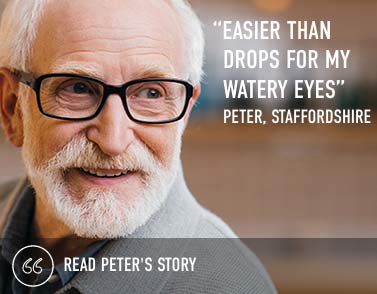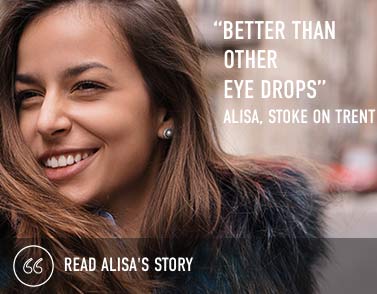CHALAZION
Notice a bump on your upper or lower eyelid? Had a recent stye that has left a small lump on your eyelid? You could have what’s called a chalazion. These are normally non-contagious and likely to go away on their own, but in the meantime, it can be handy to understand what they are, why you might get them and how you can treat a chalazion yourself at home.
What is a chalazion?
A chalazion is a swollen, painless bump that can appear on your eyelid. Our eyelids contain tiny glands, called meibomian glands, that produce an oily substance to help keep the eyes moist and healthy. If one or more of these glands becomes blocked or infected, it can cause a chalazion to develop on your eyelid. They can also be known as an eyelid cyst or meibomian cyst. It's important to note that chalazia are not bacterial infections like styes. However, they can form after you have had a stye and the bacterial infection has cleared, or with no apparent cause.
What causes a chalazion?
Blocked meibomian glands are the most common cause of chalazia. The oil in these glands can become thickened, causing it to stagnate and leading to a small lump forming in the eyelid.1 This is called a chalazion.
Chalazion risk factors:
• Rosacea
• Chronic blepharitis
• Dermatitis
• Diabetes mellitus
• Pregnancy
• Having a chalazion previously
Symptoms of a chalazion
While a chalazion shouldn’t necessarily be painful, it can cause some other symptoms ranging in severity. This may include1:
If your symptoms don’t go away or begin to improve on their own after around a month, you should seek the help and advice of an eye care professional or your local pharmacist.
How is a chalazion diagnosed?
Generally, a healthcare professional can spot this condition with a simple visual examination. An eye care professional might use a microscope called a slit lamp to get a closer look at the eyelid and may invert the eyelid to assess the inside surface, to help with diagnosing a chalazion. Your eye care professional will also be able to identify if there are any other underlying conditions, such as blepharitis, which could be causing the chalazion.
How to treat a chalazion
Treating your chalazion can be done from home using the following techniques:
How to know if a chalazion is healing
When your chalazion is healing, you should notice the bump reducing in size as well as the area beginning to feel more comfortable. The chalazion itself should also begin to diminish over time, meaning you won’t be able to see or feel it.
How to prevent a chalazion
Although you can’t always avoid getting a chalazion, there are a few things that you can do to reduce their risk.
• Eyelid cleansing: A daily eyelid cleansing routine should be followed in much the same way as you brush your teeth. This will help keep the skin around the eyes and eyelids free from contaminants that could block the meibomian glands.
• Be sure to remove eye makeup properly: If you wear makeup be sure to remove it properly, especially before sleeping. This can help prevent blockages in the meibomian glands, which could cause chalazia.
• Properly care for your contact lenses: Whether you wear daily or reusable contact lenses, it’s crucial that these are applied to the eyes with clean fingers and that they’re never worn for more than the recommended time. Failing to do so can cause issues in the eyes and the meibomian glands, which can lead to chalazia.
• Get into a good eye care routine: A good eye care routine, including warming, cleansing and hydrating, can ensure that excess fluid is draining properly from the meibomian glands rather than becoming blocked.
Chalazion FAQs
How Théa can help
The Théa product range can support your daily eye care routine and help you manage symptoms of conditions like chalazia.
Warming the eyelids with the Blepha EyeBag® can provide relief from symptoms associated with chalazion. This easy-to-use microwavable mask relieves dry, sore, gritty and tired eyes.
You can then use Blephaclean® PF Eyelid Cleansing Wipes2 to keep the eyelids clean and comfortable. These wipes are plastic-free, fragrance-free, non-greasy with no need to rinse after use.
A note from Théa
If you’re experiencing anything out of the ordinary with your eyes or are unsure about any symptoms, we recommend speaking with an eye care professional.
References:
1. The College of Optometrists: Chalazion: https://www.college-optometrists.org/clinical-guidance/clinical-management-guidelines/chalazion_meibomiancyst#Symptoms
2. Blephaclean PF Patient Information Leaflet: https://cdn.shopify.com/s/files/1/0582/8398/2999/files/Blephaclean_PF_patient_information_leaflet_Approved_Artwork_-_20122023.pdf?v=1725631924







